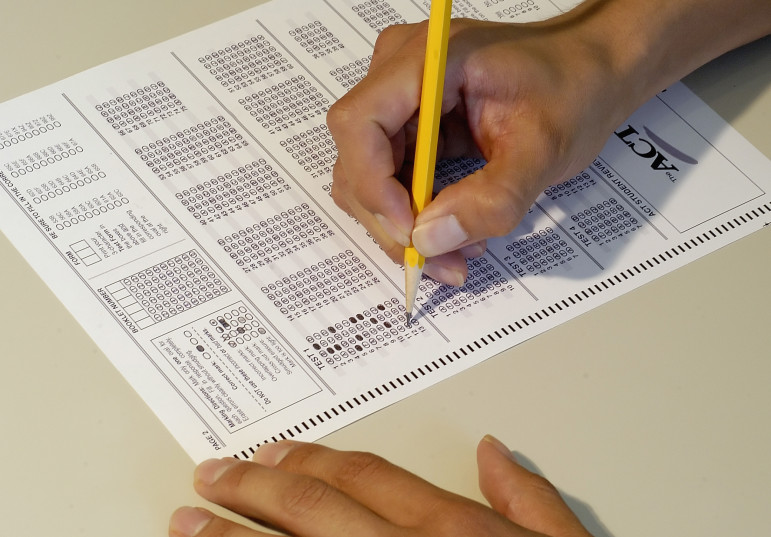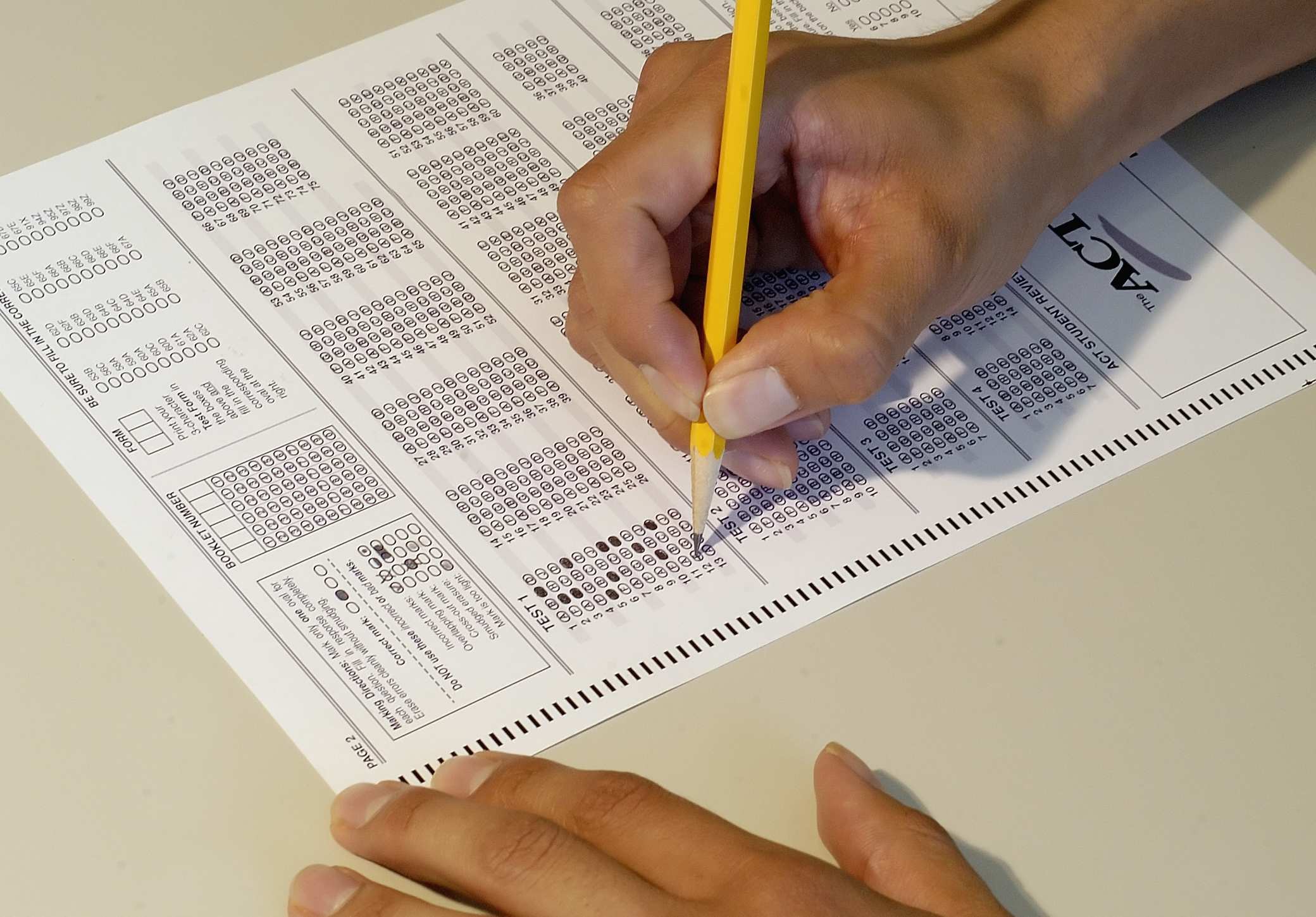
As high school students sit down to take the SAT and ACT this fall, they face a bumpy and uneven playing field.
A major gap exists between the performance of low-income students and affluent students on these college entrance exams — and between the performance of black and white students. Data released Tuesday by the College Board showed that 43 percent of all students taking the SAT so far in 2014 scored 1550 or more, a benchmark of college readiness, but only 16 percent of African-American students did.
[quiz key=”0Ajm2zcJUEF4ddGNxbGxhMzc2eXF5SWJ4VzlfRjhRRkE” align=”alignright” layout=”sidebar” answerstyle=”alpha” title=”Take the Quiz” lede=”How well can you standardize test?”]The problem is not new and it has not gone unnoticed — it was addressed by a White House conference this year and by an overhaul of the SAT — but it has gone unsolved.
Some nonprofits are ramping up free test prep and support services for underserved kids.
On the other hand, the National Center for Fair and Open Testing takes the position that racial, class, gender, and cultural barriers are built into the testing system itself.
Money and test scores go hand-in-hand
College Board data shows that SAT scores are highly correlated with income. The average score for kids with a family income of $20,000 or less is 1,326, according to 2013 data, rising to 1,569 in families with an income of $100,000 to $120,000.
Data from ACT Inc. shows that only one-fifth of low-income students met three of the four ACT “college readiness” benchmarks.
The gap based on income and race starts early and it culminates with the unequal access to expensive test preparation services purchased as a matter of course by many affluent parents.
Kaplan, a well-known test preparation company, is advertising its most popular SAT classroom course for $699, while an online course costs $299. Princeton Review’s courses are similarly priced. It also offers a private tutoring package for as much as $6,600.
Many low-income kids are in high schools that don’t provide support and encouragement for college and don’t steer then to a college prep curriculum.
Many are in schools without a “college culture” and that offer little guidance. The average U.S. guidance counselor has a caseload of 471 students, according to the latest figures from the American School Counselors Association. But nearly all low-income students who took the ACT aspire to go to college, according to a report released in July by ACT Inc.
Coaching and guidance
College entrance tests are a critical part of the admission process of most four-year college, according to the National College Access Network, a network of organizations that helps underrepresented students apply to, enter, and succeed in college.
After a White House conference in January focusing on improving college access, several nonprofits have ramped up their efforts to provide test coaching and guidance.
College Possible is a nonprofit that offers free services to 3,400 high school students in Minneapolis-St. Paul, Milwaukee, Omaha, Philadelphia and Portland, Ore., said spokesperson Diego Ruiz.
The organization recruits AmericCorps volunteers to serve as “near peer” advisors two afternoons each week during a student’s junior and senior years of high school. During junior year, they help prepare the students for the SAT or ACT, teach them about the college application process, and take them on tours of college campuses. They also help kids sign up for summer enrichment courses.
During senior year, they help the students apply for college and for financial aid.
Money is only one of the barriers the kids face, Ruiz said. They need a great deal of information to navigate the college admission process.
Equally important, he said is having someone who can say: “I believe you are college material.”
“There’s something about that connection between the students and the AmericCorps coach that is what makes our program so successful,” he said.
College Possible also tracks its students all the way through college, he said. Currently, 5,000 college students are getting support from a College Possible coach, he said.
College Advising Corps, based in Chapel Hill, N.C., recruits recent college graduates to serve as coaches in 484 high schools in 14 states. Their goal is to lead low-income and first-generation students to college. The coaches work full-time alongside high school staff to mentor and assist students in the college admissions process, help get SAT and ACT fee waivers and fill out FAFSA applications.
CollegeSpring is a San-Francisco-based nonprofit that helps prepare low-income students for the SAT. In July it announced an expansion from California to New York. Since 2008, it has worked with more than 5,000 students in the Bay Area and Los Angeles, according to its website.
In addition, GEAR UP, Gaining Early Awareness and Readiness for Undergraduate Programs, is a grant program through the U.S. Department of Education designed to prepare kids from ow-income families to enter and succeed in college. It provides states and partnerships with six-year matching grants.
The 2014 awards, announced in September, will serve an estimated 116,000 students through 10 states and 31 partnerships, according to a statement from the National Council for Community and Education Partnerships, which partners with GEAR UP.
Testing called unfair
But these coaching and mentoring programs meet still meet only a small part of the demand, said Bob Schaeffer, public education director of the National Center for Fair and Open Testing. His goal is to get colleges to stop requiring the SAT or ACT. He wants the tests to be an optional part of the college admissions material that students supply. The coursework that students do in high school is a better predictor of college success than the SAT, he said.
The SAT is a reflection of “accumulated opportunity” and it reinforces the discrimination that already exists, he said.
Kids who grow up in well-to-do homes have advantages, he said.
The circumstances of rich and poor kids are very unequal, but kids are held to the same yardstick when they take a test like the SAT. When the test is required by colleges, the result is that low-income kids are not be admitted to colleges in equal numbers, he said.
The organization wants to reduce the role of the SAT and ACT as gatekeepers to a college education.

























